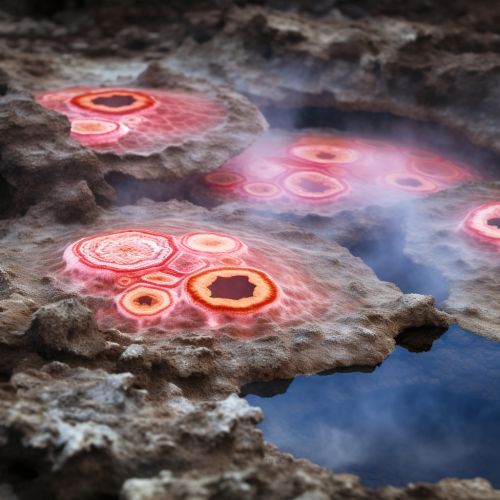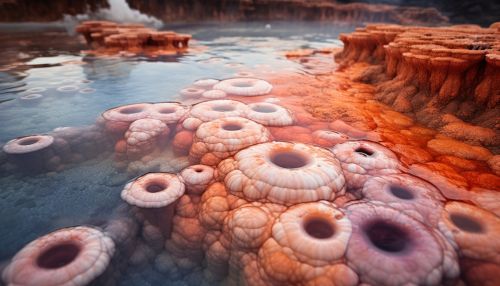Thermophiles
Introduction
Thermophiles are a type of extremophile that thrive in extremely hot environments, often with temperatures exceeding 45 degrees Celsius. They are found in various geothermally heated regions of the earth, such as deep sea hydrothermal vents and hot springs. Thermophiles are a fascinating subject of study in the field of microbiology, as they possess unique adaptations that allow them to survive and thrive in conditions that are lethal to most life forms.
Classification
Thermophiles can be broadly classified into three categories: moderate thermophiles, extreme thermophiles, and hyperthermophiles. Moderate thermophiles prefer temperatures between 50 and 60 degrees Celsius, while extreme thermophiles thrive at temperatures between 60 and 80 degrees Celsius. Hyperthermophiles, the most heat-tolerant of all, can survive at temperatures exceeding 80 degrees Celsius, with some species even capable of withstanding temperatures above 100 degrees Celsius.


Adaptations
Thermophiles have evolved a variety of adaptations that enable them to survive in high-temperature environments. These adaptations are primarily at the molecular level, affecting the structure and function of proteins, lipids, and nucleic acids.
Proteins
The proteins of thermophiles are structurally adapted to withstand high temperatures. They exhibit increased rigidity, with more ionic bonds, disulfide bridges, and a higher proportion of hydrophobic amino acids. These adaptations help to stabilize the protein structure and prevent denaturation at high temperatures.
Lipids
The cell membranes of thermophiles contain lipids with high melting points. These lipids are typically saturated and have long chain lengths, which increase the rigidity of the membrane and prevent it from becoming too fluid at high temperatures.
Nucleic Acids
Thermophiles have evolved mechanisms to stabilize their nucleic acids at high temperatures. These include the use of thermally stable DNA polymerases for DNA replication, and the presence of positive supercoiling in their DNA, which helps to prevent the DNA from denaturing.
Metabolism
Thermophiles exhibit a variety of metabolic pathways, which are often unique to these organisms due to their extreme environments. Many thermophiles are chemolithotrophs, obtaining energy from the oxidation of inorganic compounds. Others are chemoorganotrophs, deriving energy from the oxidation of organic compounds. Some thermophiles are capable of photosynthesis, using sunlight as their primary energy source.
Applications
Thermophiles have a wide range of applications in various fields, including biotechnology, industry, and environmental science. Their heat-stable enzymes, known as thermostable enzymes, are particularly valuable. These enzymes retain their activity at high temperatures, making them useful in industrial processes that require high-temperature conditions. For example, the thermostable DNA polymerase from the thermophilic bacterium Thermus aquaticus is used in the polymerase chain reaction (PCR), a widely used technique in molecular biology.
